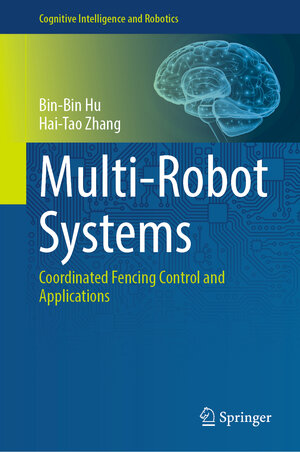
Multi-robot coordinated fencing, where a team of robots forms a protective formation around a target, has garnered significant attention and proven useful in practical applications such as area convoying. However, real-world scenarios often involve complex target characteristics, including varying dynamics and multiple targets, which can pose challenges in maintaining the formation. Additionally, due to sensor costs and environmental constraints, robots may only have access to directional constraint information, presenting further challenges.
This book highlights cooperative fencing approaches for multi-robot systems and their practical applications to different unmanned surface (ground) vehicles, providing an overview of research trends and future directions in coordinated fencing. Firstly, a basic fencing controller using neighboring angle repulsion for a constant-velocity target is designed, laying the groundwork for complex fencing missions. Then, for more complex fencing with an evenly rotating formation, a distributed controller is developed using input-to-state stability, achieving coordinated fencing under intermittently varying topologies. For more complex varying-velocity targets, a distributed fencing controller based on output regulation theory is proposed. For general target fencing missions in both 2D and 3D, a formal long-term task execution framework is developed using control barrier functions. Moreover, unlike previous methods that rely on the relative position between the robot and the target, a distributed bearing-only fencing control algorithm based on the persistent-excitation condition is developed, requiring only comparatively inexpensive sensors. Finally, this exploration into the theory and application of coordinated fencing control provides guidelines for robust, efficient, and complex practical implementations of multi-robot missions.



